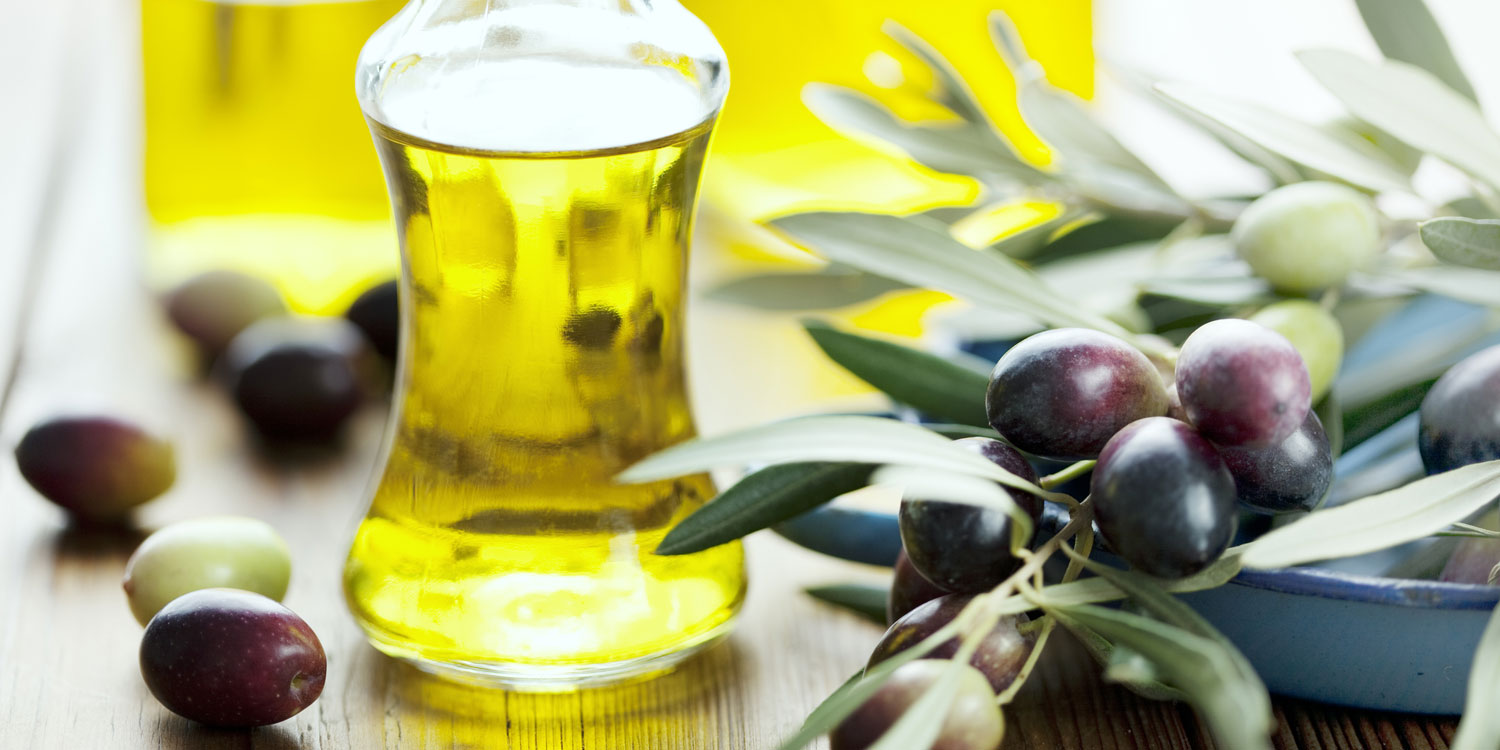Select oils labeled extra-virgin.
Olive oil labeled pure or light is refined oil, which is tasteless on its own, so producers add a little bit of extra-virgin olive oil for flavor. ("Light" means lightly flavored, not low-calorie—the oil has the same number of calories as extra-virgin olive oil.) Unfortunately, imported oil labeled extra-virgin is not a reliable indication of an oil's quality because of lax labeling laws.
What does cold press mean?
The phrase "first cold press" is a throwback to the days when olives were pressed between mats, often more than once. For subsequent pressings, the paste was heated in order to extract more oil. With the sophisticated machinery used today to make extra-virgin olive oil, the olive paste or the oil itself is never heated above 86 degrees F, so the term is meaningless unless the oil was actually produced in a press.
Choose oils packed in dark glass or in a box and stored in a cool place.
Heat, light and oxygen are enemies of olive oil, promoting oxidation and rancidity. Even superior oil will eventually go rancid due to slow oxidation.
Dark bottles or some outside covering like a box help protect oil. But many curious consumers want to see the color of the oil (even though color is not an accurate indicator of quality or taste), so producers often use clear glass.
Examine the bottle for either a harvest date or a use-by date, which is usually 18 to 24 months after the harvest. This may be in small lettering anywhere on the bottle, sometimes on the bottom. The more recent the harvest, the better.
How long does olive oil last?
Good extra-virgin olive oil stored properly will keep for at least a year, although it may lose some fruitiness.
Olives are harvested in the fall and winter and are generally allowed to settle before bottling. (The exception is olio nuovo, which is sold shortly after it is milled.) This means that an olive oil sold in late fall and early winter is one year old.
Price does matter.
Extra-virgin olive oil, especially if it is hand-harvested is expensive to produce. Be wary of extra-virgin olive oils selling for less than $20 a liter, and ask questions if an oil's price is drastically reduced.
Some people raise their eyebrows at the price of a good extra-virgin olive oil, but those same people might pay even more for a fine bottle of wine that is consumed in an evening.
If the label on a bottle of olive oil sports a metal from a fair or competition, it means that a trained panel tasted it and found it distinctive. The medal should include the year that it was awarded and correspond with the harvest or use-by date on the bottle.
Store oil properly in a cool, dark place.
Refrigeration can be harmful. Each time the bottle is removed from the cold, condensation can form on the inside of the lid and drop into the oil, introducing oxygen.
It is tempting to keep oil next to the stove, but prolonged exposure to high temperatures will foster rancidity.
Match the size of the bottle to your needs. How much will you consume in two months? Olive oil in large bottles should be transferred to smaller containers when it is half gone to decrease oxygen exposure.
And finally, do not save an olive oil for special occasions. It will not improve with age.





